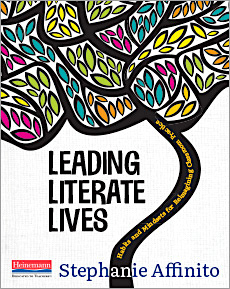Reading for Pleasure Helps Keep Us Healthy
I have a secret life with books.
I wake up early in the morning to read them with my cup of coffee. I sneak them into my purse to read when I should be doing something else. I stay up late and read under the glow of my book light while the rest of the house is sleeping.
I’ve always been a voracious reader. Books were my friends throughout my childhood, my easy-to-access therapists through my teenage and young adult years, and now my best parenting tools and personal mentors.
When I make time for pleasurable reading, I feel different. I am happier and more relaxed. I am curious and engaged. I am energized and inspired. But I know just how hard it can be to make time to read in our busy lives, when pleasurable reading might feel indulgent, frivolous and even selfish given all we have to juggle.
But our reading lives matter. They matter to our physical, cognitive and emotional health, and making time to tend to them can have sweeping positive effects across multiple aspects of our lives. Effects that can convince us to find the time to read and then privilege this sacred time in our classrooms.
Physically, reading literally calms us down. In just six minutes of reading, we can slow our heart rate and relax our muscles. Over time, consistent reading can lower stress, support better sleep and even lengthen our lives by up to two years.
Cognitively, reading boosts our brain power. Reading boosts vocabulary and knowledge and strengthens our memory. These effects add up over time and might even prevent age-related cognitive decline.
Mentally, books promote emotional well-being. Not only do people who read for pleasure report fewer feelings of depression, they are generally happier people, overall. But better yet? Reading harnesses our ability to empathize with others, consider new perspectives and live experiences we couldn’t fathom through the pages of a book.
Once we truly understand the benefits of a life well-read, it becomes easier to give ourselves permission to ‘just read’ for pleasure. Not only is it a welcome respite from our busy day-to-day existence, it fills our lives with tremendous benefits.
Sharing the benefits with our students
But those benefits don’t stop there. Because once we’ve lit our own reading hearts on fire, we can’t help but bring that same fire to our classrooms. We excitedly share the books we are reading with our students. We find more time to dedicate to independent reading so students can do the same. We stock our classroom libraries and give students the very freedom we allow ourselves to choose books that matter to each of them.
Best of all, we talk to students as fellow readers, not students who must answer comprehension questions. We make connections to our books and share them with other readers. We make our reading lives visible and strengthen our classroom reading bonds as a result.
Making reading a priority in our own lives shifts the way we make reading a priority in our classrooms. And if we make independent, pleasurable reading a staple of our classrooms, then our students can experience the physical, cognitive and emotional impacts of reading for themselves, literally changing the trajectory of their lives.
Write your own permission slip
So, if you’ve been struggling to make reading a priority in your own life, consider this your permission slip to do just that. In Leading Literate Lives: Habits and Mindsets for Reimagining Classroom Practice, you’ll find fifty-four invitations to cultivate your reading and writing habits, set your literate heart on fire and strengthen your reading and writing communities. And once you try them for yourself, you’ll find concrete ways to bring those very ideas to life in your classroom, too.
Here are two simple, yet effective ways, to strengthen your reading habits that are featured in the book:

Place your TBR stack strategically in your daily line of vision. By glancing at those books every day, you’re more apt to find the time to read them. I promise.
►Then, challenge yourself. Audit your day and challenge yourself to find just ten minutes to read. Remember, it only took six minutes of reading to experience the positive physical effects mentioned above, and we can all find ten minutes in our day for something we value.
You might set your alarm ten minutes earlier, pledge ten minutes of your lunch break to a book, listen to an audiobook as you walk the dog, stop scrolling social media ten minutes earlier and open an ebook, or end the night reading a book from your stack before bed.
We’ll love leading literate lives
Armed with the knowledge of the positive physical, cognitive and mental benefits of reading – combined with the concrete actions we take to make reading a priority throughout the year – we can head into tomorrow with a new mindset, eager to cultivate our own literate lives.
Happy reading!
Stephanie Affinito is an educator in the Department of Literacy Teaching and Learning at the University at Albany in New York. She has a deep love of literacy coaching and supporting teachers’ learning through technology and is the author of Literacy Coaching: Teaching and Learning with Digital Tools and Technology (Heinemann, 2019).

You can connect with her online at stephanieaffinito.com and on Twitter at @AffinitoLit.
READ REVIEWS of Affinito’s book by Kathleen Palmieri and Rebecca Crockett here at MiddleWeb.
































